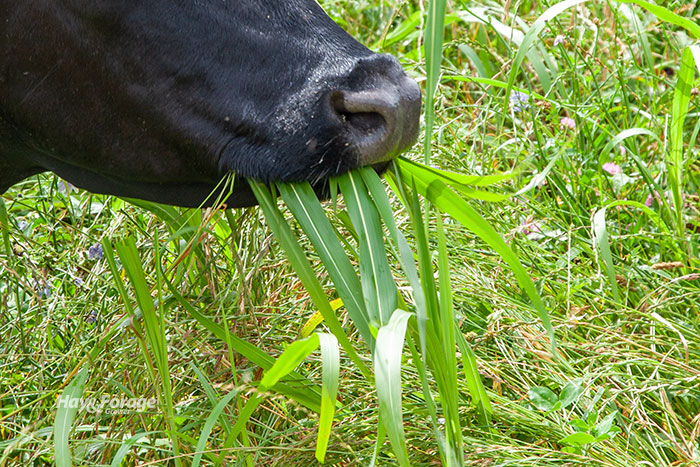Prussic acid poisoning strikes in Oklahoma |
| By Amber Friedrichsen, Associate Editor |
|
|
 Prussic acid poisoning is usually a concern in the fall when animals graze after a frost. However, this type of toxicity can also develop in forages during a drought, and it has recently started to wreak havoc on a few cattle operations in parts of Oklahoma. In a special edition of the Cow-Calf Corner newsletter from Oklahoma State University Extension addressing the issue, Rosslyn Biggs and Barry Whitworth note prussic acid is also known as hydrocyanic acid or cyanide and may be deadly if ingested by livestock. The extension veterinarians say this compound can be found in sorghum species, including johnsongrass, when it is extremely dry, and they advise producers of the risks of grazing cattle in this situation. Know the signs If plants are stressed by drought conditions, naturally occurring hydrocyanic glycosides will convert to prussic acid when they are broken down via chewing or mechanical harvest. Then, prussic acid is released in the rumen and absorbed into the bloodstream. “Once in the circulatory system, the toxin prevents cells from taking up oxygen,” Biggs and Whitworth explain. “The clinical signs most often seen include excitement, muscle tremors, increased respiration rate, excess salivation, staggering, convulsions, and collapse.” If an animal dies, the cause of death would ultimately be asphyxiation at the cellular level due to a deprivation of oxygen. Prussic acid poisoning progresses quickly, so it is crucial to remove livestock from a pasture and contact a veterinarian if animals start to display clinical signs. Veterinarians can administer sodium nitrate and sodium thiosulfate to reverse the toxicity, but these drugs can be hard to obtain. Furthermore, treatment will only be successful if it is initiated quickly. “It is advisable to contact your veterinarian before grazing potential toxic plants to make sure your veterinarian will have availability to respond and have the necessary drugs on hand to treat the cattle if a problem arises,” Biggs and Whitworth state. Be proactive To inhibit prussic acid poisoning, avoid turning cattle out to a pasture on empty stomachs. Provide feed prior to grazing to reduce their consumption of forages containing prussic acid. Also, wait to graze sorghum species until plants are 18 to 24 inches tall, and practice rotational grazing to keep animals from grazing lush growth. Before grazing, Biggs and Whitworth recommend taking soil samples and fertilizing fields accordingly to correct any nutrient deficiencies. There are also two types of tests to determine prussic acid levels in plants. One is a quantitative assessment that requires forage samples be submitted to a diagnostic lab, and the other is a qualitative test that detects the presence of prussic acid in fresh plant material. With that said, use caution grazing livestock regardless of test results in the case of a false negative. For more information, view this fact sheet by Oklahoma State University Extension.  Amber Friedrichsen Amber Friedrichsen is the 2022 Hay & Forage Grower editorial intern. She currently attends Iowa State University where she is majoring in agriculture and life sciences education-communications and agronomy. Friedrichsen grew up on her family’s diversified crop and livestock farm near Clinton, Iowa. |
